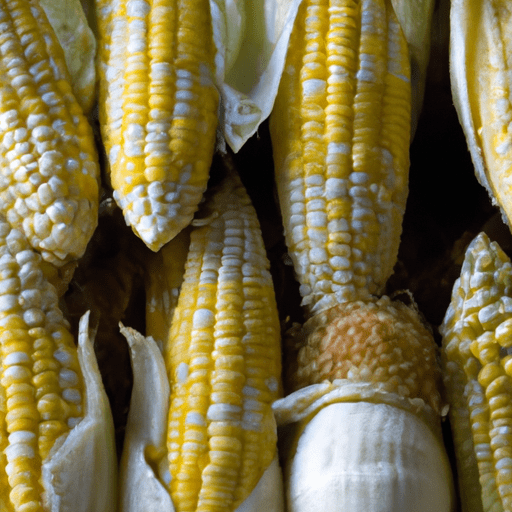Corn Rolls: A Delightful Twist on Classic Comfort Food
Corn rolls, also known as corn fritters, are a mouthwatering treat that combines the sweetness of corn with a crispy exterior. These delightful rolls are a beloved staple in many cuisines around the world. In this article, we’ll delve into the taste, common uses in cooking, nutritional value, and some interesting history and facts about corn rolls.
The Taste of Corn Rolls: A Sweet and Savory Combination
Corn rolls are an explosion of flavors and textures. The sweetness from the fresh corn kernels finds a perfect balance with the savory notes of seasonings. The fluffy interior offers a contrast to the crispy exterior, creating an irresistible bite. Whether served as an appetizer, a side dish, or the star of a meal, corn rolls always leave taste buds wanting more.
Common Uses in Cooking: Versatile and Delicious
Corn rolls are a versatile dish that can be enjoyed in various ways. Here are some common uses in cooking:
Appetizer: Corn rolls make a fantastic appetizer, especially when served with a zesty dip or a tangy salsa. The crisp outer layer and soft interior create a delightful contrast that is sure to impress guests.
Side Dish: These rolls pair well with a variety of main dishes. Whether alongside grilled meats, roasted vegetables, or tossed salads, corn rolls add a pop of flavor and texture to any meal.
Taco Filling: Corn rolls can be transformed into a fantastic taco filling. Simply slice the rolls in half, stuff them with your favorite fillings like shredded chicken, salsa, avocado, and cheese, and enjoy a unique twist on traditional tacos.
Breakfast Treat: Start your day on a delicious note by serving corn rolls for breakfast. They can be enjoyed with a drizzle of honey, paired with eggs and bacon, or used as a base for a tasty breakfast sandwich.
Nutritional Value: A Nourishing Bite
Corn rolls offer more than just delightful flavors; they also bring some nutritional value to the table. Here’s a breakdown of the key nutrients found in corn rolls:
Fiber: Corn rolls contain dietary fiber, which aids in digestion and helps maintain bowel regularity.
Vitamins: They are a good source of vitamins, such as vitamin C and vitamin B6, which play an essential role in supporting the immune system and promoting overall health.
Minerals: Corn rolls provide important minerals including potassium, magnesium, and manganese, which are necessary for various bodily functions.
While corn rolls can be enjoyed as an occasional indulgence, you can enhance the nutritional content by using whole grain flour, adding chopped vegetables, or experimenting with alternative ingredients.
Fun Corn Roll Facts and History
Corn rolls have a rich history, with variations of the dish found in cuisines around the globe. They are a part of culinary traditions in countries like Mexico, the United States, Jamaica, and India, to name just a few.
In some cultures, corn rolls are associated with festive occasions and are often included in celebratory feasts.
The combination of corn and flour in corn rolls originated from the indigenous practices of maize cultivation in the Americas.
Corn rolls have gained popularity due to their simplicity, affordability, and ability to use surplus corn during harvest seasons.
Time to Roll in the Kitchen!
Now that you’ve learned about the tantalizing taste, versatile uses, and fascinating details surrounding corn rolls, it’s time to put on your apron and have some fun in the kitchen. Get creative with your seasoning choices, experiment with different dipping sauces, and enjoy the delightful crunch and flavors of corn rolls. Whether you’re serving them as a crowd-pleasing appetizer or as a side dish for a weeknight dinner, corn rolls are sure to satisfy all who indulge in their golden goodness.
Corn Rolls
Origin: Corn rolls, also known as corn tortillas or maize tortillas, originated in Mesoamerica, where corn was a staple crop. The indigenous peoples of this region, including the Aztecs and Mayans, were the first to make corn tortillas.
Common Uses: Corn rolls are widely used in Mexican and Central American cuisines as a versatile ingredient. They serve as the base for many traditional dishes such as tacos, enchiladas, quesadillas, and tostadas.
Nutritional Benefits: Corn rolls can provide several nutritional benefits. They are a good source of carbohydrates and dietary fiber. They also contain essential vitamins and minerals, including vitamin B, potassium, and magnesium. When prepared with minimal fat, corn rolls can be a low-fat and gluten-free option.
Unique Properties: Corn rolls have some unique properties that make them different from flour tortillas. They have a distinctive flavor and aroma, imparted by the corn flour used in their preparation. Corn rolls tend to be more dense and slightly chewy compared to flour tortillas. They are also generally smaller in size.
Historical Significance: Corn was a vital crop in Mesoamerican civilizations, and corn rolls played an essential role in their diets. The process of nixtamalization, which involves soaking corn in an alkaline solution before grinding it into flour, was developed by ancient cultures to make corn more digestible and release its nutritional benefits. Corn rolls have continued to be a significant part of the culinary traditions passed down through generations in Mesoamerican cultures.
Please note that corn rolls may vary in preparation and regional variations exist in terms of flavors and textures.




Use the share button below if you liked it.
It makes me smile, when I see it.